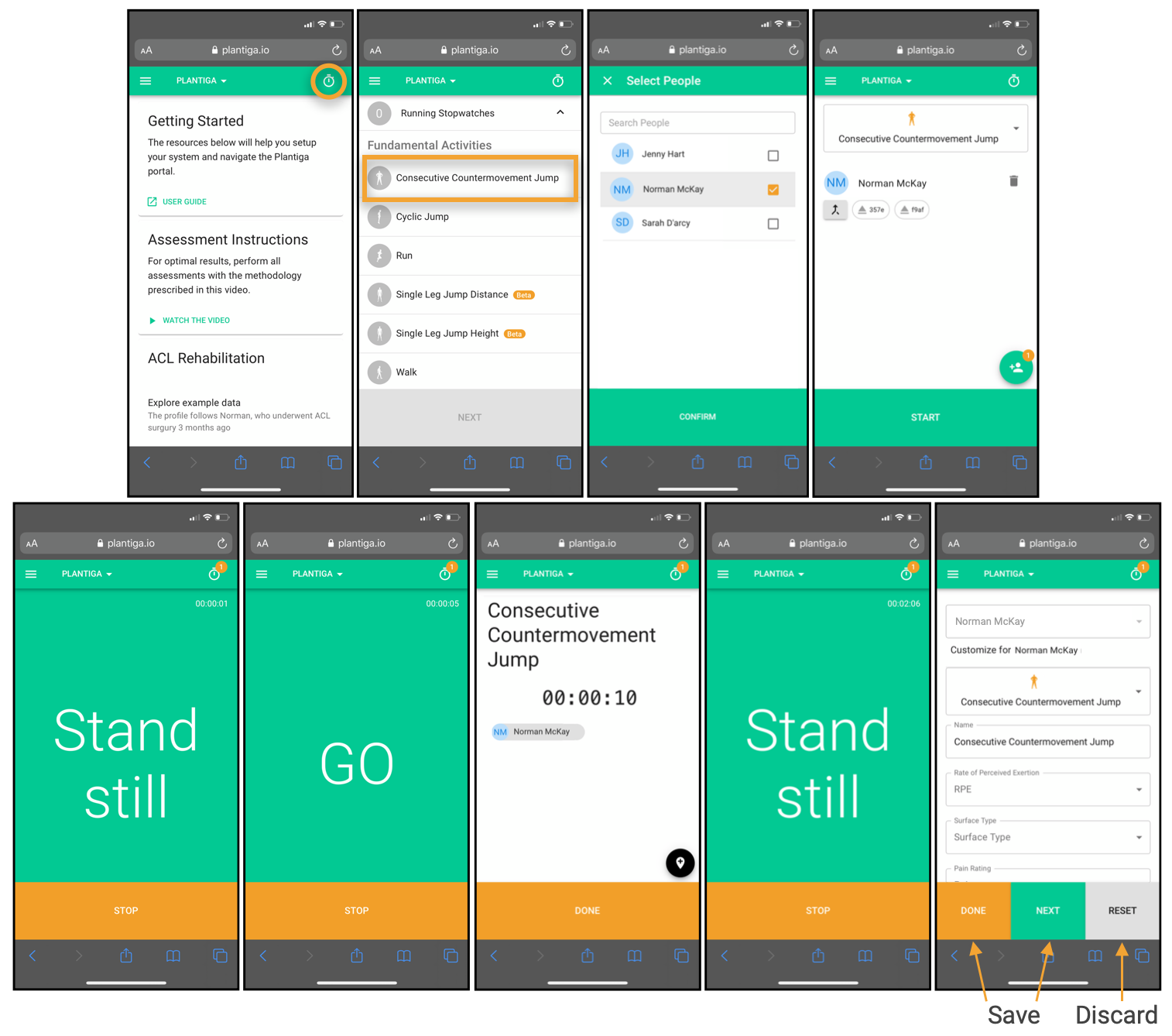Consecutive Countermovement Jump (CCMJ) Test - A Practical, valid, and reliable measure of lower-body power
CCMJs have been shown to be the most reliable measure of lower-body power in comparison to other popular jump tests such as the squat jump, Abalakow’s jump, Sargent jump, standing long jump, and the standing triple jump. The CCMJ test has also been directly linked with 0-30m sprint performances and relative strength during dynamic 1RM squat and power clean.
Procedure for Plantiga's Standard Consecutive Countermovement Jump (CCMJ) Test:
Tip: Instruct the person you're collecting data on that the aim of this test is to evaluate their ability to produce power in their lower body. They should perform five consecutive countermovement jumps, while trying to jump as high as they can and spending as little time on the ground as they can - maintaining good form at the same time.
- Tester navigates to the measure page of the Plantiga app and select the Consecutive Countermovement Jump (CCMJ) Test.
- Tester selects the subject that will be performing the activity. Address any warnings that may come up once they have been selected.
- Tester instructs subject to stand still with hands on hips and feet planted shoulder width apart, firmly on the ground.
- Tester starts the Consecutive Countermovement Jump Test on plantiga.io and the subject remains still as the stopwatch counts down from 5.
- Subject will perform 5 Consecutive Countermovement Jumps.
- Once all jumps have been performed, the tester instructs the subject to stop and plant their feet firmly on the ground.
- Once still, the tester stops the stopwatch and the subject remains still for 5 seconds.
- Tester fills out optional information (RPE, Pain, Floor type...) and saves the Consecutive Countermovement Jump Test.
How to Record a CCMJ Test

Measures Obtained from the CCMJ Test:
- Reactive Strength Index (RSI)
- Jump Height
- G-force Asymmetry
.png?height=120&name=Plantiga%20lockup%20black%20(1).png)